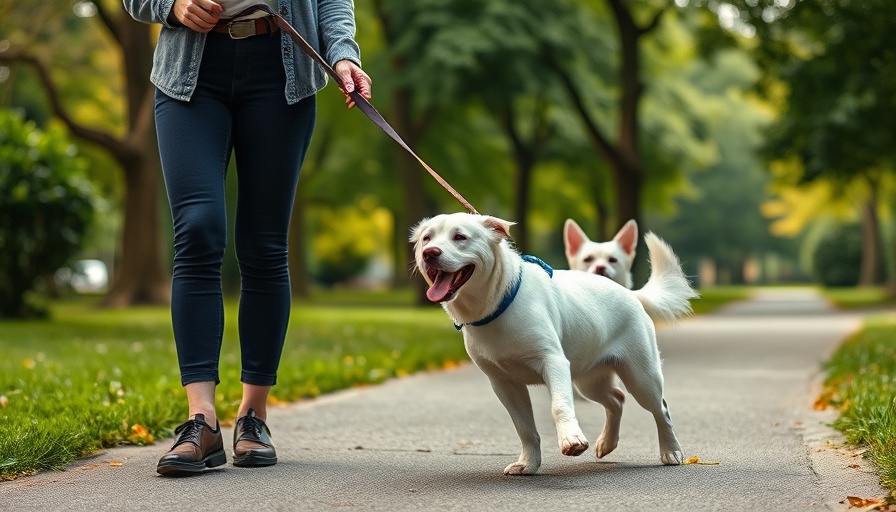
Understanding Hyperarousal: The Non-Stop Energy of Your Dog
Hyperarousal in dogs is not merely a sense of excessive energy; it can be an expression of an emotional and physiological state that overwhelms many pet owners. Think of it as an internal alarm system that, when constantly triggered, creates a whirlwind of behaviors that can be tough to manage. As dog owners, it's crucial to recognize the signs and implications of hyperarousal so we can intervene effectively.
Defining Hyperarousal: What’s Going On in Your Dog’s Mind?
Hyperarousal occurs when a dog's brain is in overdrive, unable to settle down. Common signs of this condition include excessive barking, jumping, or destructive behaviors around the home. In breeds known for their heightened instincts—like Australian Shepherds and Border Collies—this state can be particularly pronounced. As Union Lake Veterinary Hospital notes, these behaviors can stem from their breeding history, as they were designed for tasks requiring high energy and alertness.
How Hyperarousal Develops: The Role of Environment and Training
Environmental factors often play a significant role in the development of hyperarousal. Dogs who lack adequate physical and mental stimulation can become hyperactive, which is frequently misinterpreted as mere energy. However, as highlighted in the Whole Dog Journal, this hyperactivity can quickly escalate into hyperarousal without proper management. For dog owners, understanding this transition is critical for effective training and intervention.
Effective Strategies for Managing Hyperarousal
One of the first lines of defense against hyperarousal is to implement enrichment activities. As discussed in the reference articles, engaging your dog with quiet time activities can significantly soothe their overactive minds. Puzzle toys, scent games, and low-energy training play an important role in helping dogs learn to self-soothe without escalating their excitement. If all else fails, consulting a veterinarian to explore options such as behavioral therapy or medication may be necessary.
Incorporating Calming Techniques in Daily Routine
Using calming techniques in daily interactions with your dog can foster a more peaceful home environment. Techniques such as massage, TTouch, or simple quiet time spent together can promote relaxation. In fact, Eileen Koval, a dog behavior consultant, recounts how her dog, Indy, transformed through structured and gentle physical touch, helping him shift from a state of anxiety to one of calm.
Why Physical Exercise Alone Is Not the Answer
While exercise is an essential component of any dog’s routine, over-exercising a hyperaroused dog can often exacerbate their symptoms. It’s a common misconception among dog owners that tiring out their pets with endless walks or play will help alleviate hyperarousal, yet too much exercise can lead to further hyper-excitement, as stated in both Confident Canines and Union Lake's findings. Instead, combining physical activity with mindfulness and calm periods can yield better results.
Rehoming: In Some Cases, the Best Solution
One of the most difficult decisions pet owners face can be whether their dog is truly a fit for their home. When it becomes clear that a dog cannot thrive in their environment, rehoming may become the best course of action. Indy’s story exemplifies this journey; through training and adjustments in lifestyle, he found a balance, leading to a happier and healthier existence. The goal should always be ensuring what is best for the dog's well-being.
Creating a Calmer Environment for Your Dog
Implementing these strategies requires patience, consistency, and a willingness to adapt as necessary. Creating an environment where your dog feels secure will not only diminish hyperarousal behaviors but also enhance your relationship with your furry companion. Start incorporating these changes into your dog’s life today, and watch as their energy transforms into the kind of playful, calm demeanor you always envisioned.
Let us guide you through the process of understanding and managing your dog's hyperarousal. You don't have to navigate this journey alone. Seek out a local trainer or behaviorist and build a custom plan tailored to your dog's specific needs.
 Add Row
Add Row  Add
Add 




 Add Row
Add Row  Add
Add 

Write A Comment